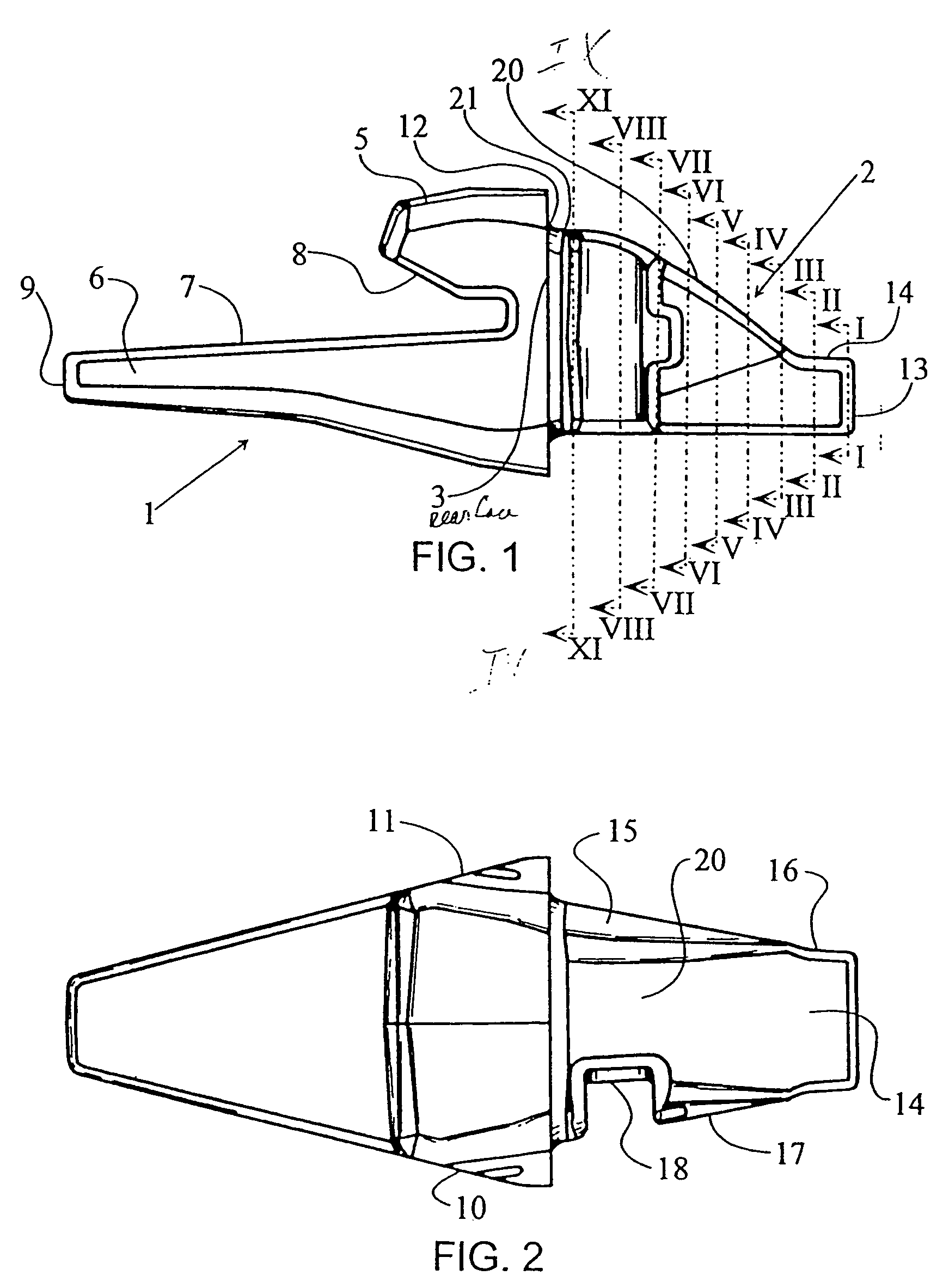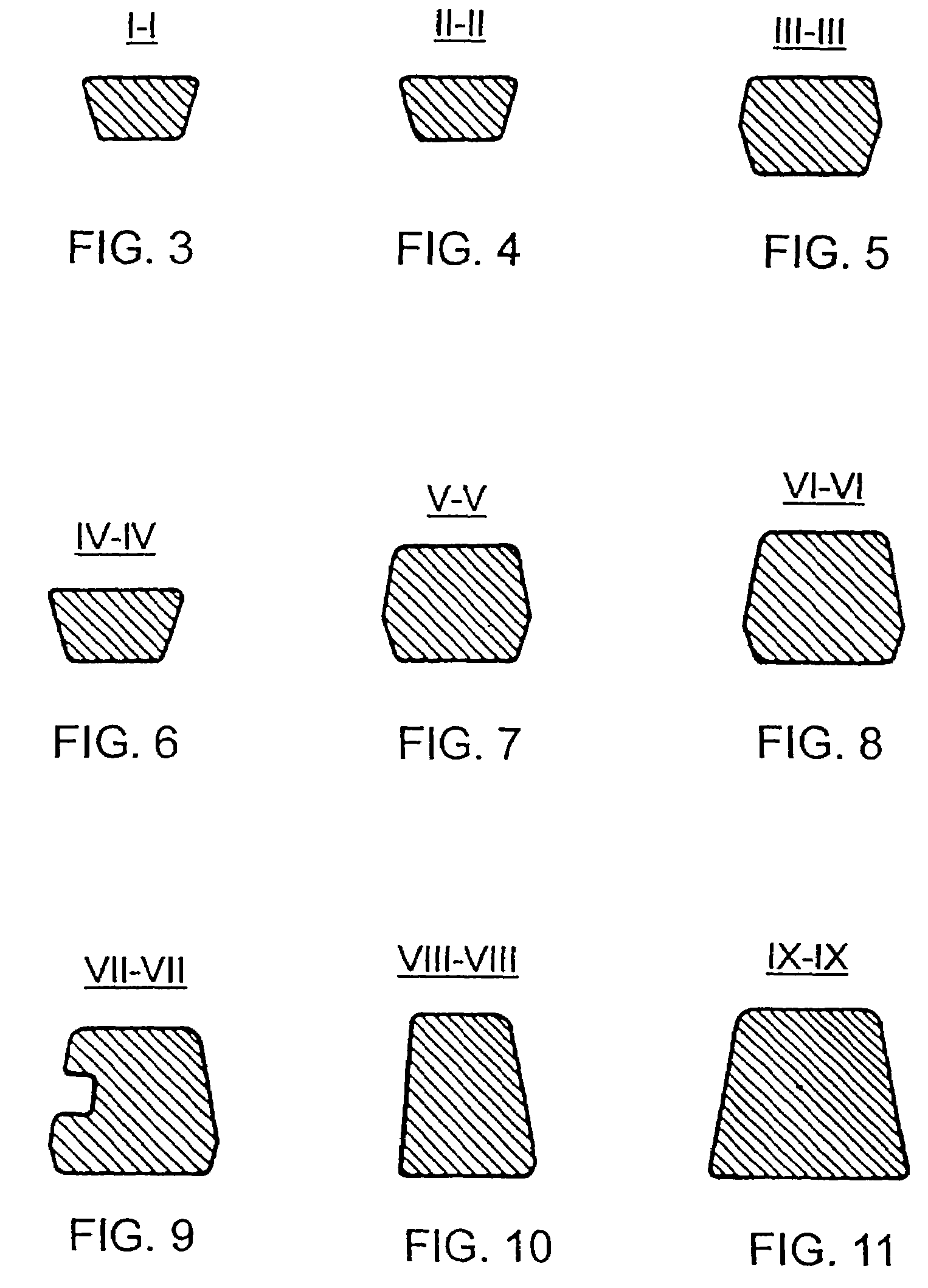Device for the coupling of excavator teeth
a technology for coupling and excavators, which is applied in the direction of soil-shifting machines/dredgers, constructions, etc., can solve the problems of increasing local wear and suffering significant problems at the active edge, and achieves greater mechanical strength, increased cross-section of the nose, and increased mechanical strength.
- Summary
- Abstract
- Description
- Claims
- Application Information
AI Technical Summary
Benefits of technology
Problems solved by technology
Method used
Image
Examples
Embodiment Construction
[0020]As shown in the FIG., the coupling for excavator teeth which is the subject of the present invention has a fork-like part 1 intended for coupling with the edge of the excavator bucket and a region 2 that projects from the rear face 3 of the region 1 and is intended to receive the excavator tooth, indicated by 4 in FIGS. 12 and 14 and in FIGS. 15 and 16.
[0021]The region 1 for the coupling of the excavator to the bucket is fork-shaped with an upper arm 5 and a lower arm 6 which are separated by an indentation defined by flat areas 7 and 8 intended to receive the edge of the excavator bucket and which in plan have sections decreasing from the rear face 3 of the region 1 to the free end 9, the upper arm 5 also having flat lateral faces 10 and 11.
[0022]The tooth coupling projection 2 has a combination of successive regions, which is basically defined, as will be seen in FIGS. 3 to 11, by a structure constituted basically by two inverted dovetails or trapezoids. That is to say, the ...
PUM
 Login to View More
Login to View More Abstract
Description
Claims
Application Information
 Login to View More
Login to View More - R&D
- Intellectual Property
- Life Sciences
- Materials
- Tech Scout
- Unparalleled Data Quality
- Higher Quality Content
- 60% Fewer Hallucinations
Browse by: Latest US Patents, China's latest patents, Technical Efficacy Thesaurus, Application Domain, Technology Topic, Popular Technical Reports.
© 2025 PatSnap. All rights reserved.Legal|Privacy policy|Modern Slavery Act Transparency Statement|Sitemap|About US| Contact US: help@patsnap.com



